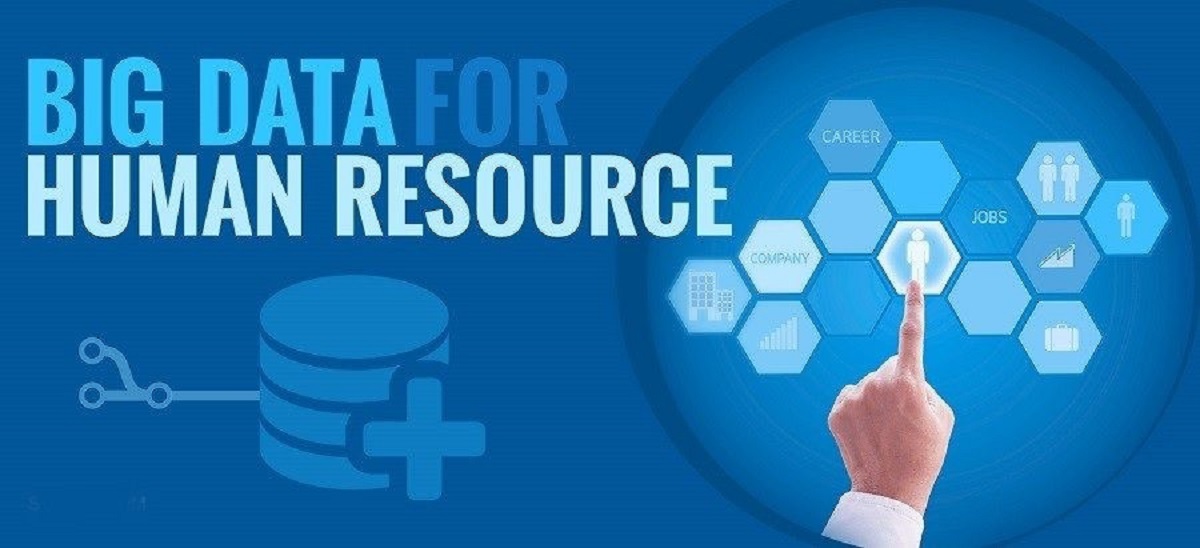Introduction
Welcome to the world of Big Data, where mountains of information are collected, analyzed, and utilized to drive business growth and innovation. In today’s data-driven society, the demand for skilled professionals who can leverage the power of Big Data is soaring. From business intelligence to predictive analytics, organizations across industries are harnessing the vast potential of Big Data to make informed decisions and gain a competitive edge.
But what exactly is Big Data? It refers to the vast amount of structured and unstructured data that is too complex and voluminous for traditional data processing techniques to handle. This includes data from various sources such as social media, customer transactions, sensor readings, and more. Big Data is characterized by its volume, velocity, and variety, and it provides valuable insights when properly analyzed.
To embark on a career in Big Data, you need to acquire a unique set of skills that combines technical expertise with analytical abilities. This field requires professionals who can manipulate and interpret data, as well as design and implement solutions to extract meaningful insights. Additionally, having strong mathematical and statistical skills, proficiency in programming languages, and a sound understanding of databases and data warehousing are essential.
In this article, we will delve into the intricacies of building a successful career in Big Data. We will explore the skills and education required, the tools and technologies commonly used, and the various job roles and career opportunities available. Whether you are a recent graduate, a seasoned IT professional, or someone looking to switch careers, this guide will provide you with the necessary insights to navigate the world of Big Data and make informed decisions about your career path.
So, strap in and get ready to embark on a thrilling journey into the realm of Big Data. Whether you are fascinated by the power of data or intrigued by the possibilities it holds, this field offers immense opportunities for growth, innovation, and impacting the world of business and beyond.
Understanding Big Data
Before diving into a career in Big Data, it’s essential to have a solid understanding of what it entails. As mentioned earlier, Big Data refers to the vast amount of structured and unstructured data that organizations collect from various sources. This data can be extremely valuable when properly analyzed and utilized.
The volume of data generated daily is staggering. We’re producing data at an unprecedented rate, thanks to advancements in technology and the increasing digitization of our lives. Social media platforms, e-commerce websites, IoT devices, and countless other sources contribute to the massive volume of data being generated. This sheer volume is one of the defining characteristics of Big Data.
The velocity at which data is generated is another critical aspect of Big Data. In today’s digital age, data is produced in real-time or near real-time. Whether it’s a tweet, a sensor reading, or a financial transaction, data is being constantly and rapidly generated. This high-velocity data creates unique challenges in terms of storing, processing, and analyzing it in a timely manner.
The variety of data is also a key aspect of Big Data. It includes structured data, which is organized and follows a specific format, and unstructured data, which lacks a predefined structure. Examples of structured data include customer records, sales data, and inventory data, while unstructured data includes social media posts, images, videos, and text documents. Big Data encompasses both types, and analyzing unstructured data poses additional challenges due to its complexity.
Aside from volume, velocity, and variety, Big Data is also characterized by its veracity. Ensuring the accuracy and reliability of data is crucial for extracting meaningful insights. With such a vast amount of data being generated, there is always the risk of incomplete or incorrect data. Data cleansing and data quality processes are essential to mitigate these issues and ensure the integrity of the analysis.
Now that you have a basic understanding of what Big Data entails, it’s time to explore the skills and qualifications necessary to embark on a successful career in this exciting field.
Skills Required for a Career in Big Data
A career in Big Data demands a unique skill set that combines technical expertise, analytical thinking, and problem-solving capabilities. Here are some of the essential skills required to thrive in the field of Big Data:
- Data Analysis: The ability to extract insights from raw data is crucial in Big Data. Professionals should be skilled in techniques like data cleansing, data transformation, and data modeling to uncover patterns and trends.
- Programming Languages: Proficiency in programming languages such as Python, R, and Java is vital for data manipulation, statistical analysis, and building data models.
- Statistics and Mathematics: A solid understanding of statistics and mathematics is essential for conducting accurate data analysis, hypothesis testing, and predictive modeling.
- Database Knowledge: Familiarity with databases, including SQL and NoSQL, is necessary for managing and organizing large volumes of data efficiently.
- Data Visualization: The ability to present complex data in a clear and visual format is crucial. Proficiency in tools like Tableau, Power BI, or Python libraries such as Matplotlib and Seaborn is highly valued.
- Machine Learning: Knowledge of machine learning algorithms and techniques is essential for building predictive models and developing intelligent applications.
- Problem-Solving: Big Data professionals should have strong problem-solving skills to address data-related challenges and identify innovative solutions.
- Communication: Effective communication skills are essential for explaining complex data concepts to non-technical stakeholders and facilitating collaboration within multi-disciplinary teams.
While the technical skills mentioned above form the backbone of a Big Data career, it’s equally important to develop soft skills such as critical thinking, adaptability, and teamwork. The field of Big Data is continuously evolving, and professionals need to stay updated with the latest tools and technologies.
Additionally, having domain-specific knowledge can give you an edge in a Big Data career. Understanding the industry or domain you work in allows you to contextualize the data and derive more meaningful insights.
Remember, acquiring these skills is an ongoing journey, and continuous learning is essential to stay ahead in the rapidly evolving field of Big Data.
Education and Certifications for Big Data
When it comes to pursuing a career in Big Data, there is no one-size-fits-all educational path. However, having the right education and certifications can significantly enhance your knowledge and credibility in the field. Here are some options to consider:
1. Bachelor’s Degree: Many professionals start their Big Data journey by obtaining a bachelor’s degree in fields such as Computer Science, Mathematics, Statistics, or Data Science. These undergraduate programs provide a strong foundation in programming, data analysis, and mathematical concepts.
2. Master’s Degree: Pursuing a master’s degree, such as a Master of Science in Data Science or a Master of Business Administration with a concentration in Business Analytics, can offer more specialized knowledge and advanced techniques in Big Data. These programs delve deeper into areas like predictive modeling, machine learning, and data visualization.
3. Online Courses and Bootcamps: Online learning platforms and bootcamps offer a flexible and cost-effective way to gain industry-relevant skills in Big Data. Platforms like Coursera, Udemy, and edX provide a wide range of courses specifically tailored for Big Data and Data Science. These courses often cover topics like data analysis, programming languages, and machine learning algorithms.
4. Professional Certifications: Earning certifications in Big Data can validate your skills and expertise in the field. Popular certifications include the Cloudera Certified Data Analyst, Microsoft Certified: Azure Data Scientist Associate, and IBM Certified Data Engineer. These certifications demonstrate your proficiency in specific tools, technologies, and methodologies relevant to Big Data.
While formal education and certifications are valuable, it’s important to remember that practical experience and hands-on projects are equally crucial in the Big Data field. Employers often look for candidates who can apply their knowledge to real-world scenarios and have a track record of successfully handling complex data analysis tasks.
Therefore, as you pursue your education and certification journey, be sure to also focus on building a strong portfolio of projects that showcase your abilities in data analysis, programming, and problem-solving. These practical experiences will not only demonstrate your skills to potential employers but also enhance your understanding of real-world data challenges.
Furthermore, staying updated with the latest advancements in Big Data through industry conferences, webinars, and networking events can help you stay ahead of the curve and demonstrate your commitment to continuous learning.
Keep in mind that while education and certifications are valuable, they should be seen as stepping stones in your Big Data career. The most important aspect is to apply the knowledge you acquire to real-world situations, continuously learn and adapt to emerging technologies, and strive for excellence in your field.
Building a Strong Foundation in Mathematics and Statistics
Mathematics and statistics form the backbone of Big Data analytics. To excel in this field, it is crucial to develop a strong foundation in these disciplines. Here’s why mathematics and statistics are essential and how you can build the necessary skills:
1. Data Analysis: Mathematics and statistics provide the tools and techniques needed to analyze and interpret complex data sets. Concepts such as probability, hypothesis testing, and regression analysis allow you to draw meaningful insights from raw data.
2. Predictive Modeling: Building accurate predictive models requires a solid understanding of mathematical algorithms and statistical methods. Techniques like linear regression, logistic regression, and decision trees are commonly used in predicting trends, patterns, and future outcomes.
3. Machine Learning: Machine learning algorithms rely on mathematical and statistical concepts to train models that can learn and make predictions based on data. Understanding linear algebra, calculus, and probability theory is crucial in developing robust machine learning models.
4. Experimental Design: Mathematics and statistics play a vital role in designing experiments and conducting A/B tests. By applying statistical methodologies, you can determine the significance of experimental results and make informed decisions.
To build a strong foundation in mathematics and statistics, consider the following steps:
1. Take Relevant Courses: Pursue courses in mathematics and statistics, both at the undergraduate and graduate levels, to develop a solid understanding of key concepts. Courses in calculus, linear algebra, probability, and statistics are particularly important.
2. Online Learning Resources: Utilize online learning platforms like Khan Academy, Coursera, and edX, which offer comprehensive courses and tutorials on mathematics and statistics. These platforms provide a flexible and accessible way to enhance your knowledge and proficiency.
3. Practice with Real-World Data: Apply your mathematical and statistical knowledge to real-world data sets. This hands-on experience will help you understand the practical challenges and develop problem-solving skills specific to Big Data analysis.
4. Collaborate and Seek Guidance: Engage in discussions with peers and professionals in the field of Big Data. Join online forums, participate in data analysis competitions, and collaborate on projects to get valuable feedback and insights.
5. Continuously Learn and Stay Updated: As the field of mathematics and statistics evolves, it is crucial to stay updated with the latest advancements and emerging methodologies. Follow research papers, attend webinars, and read industry publications to enhance your knowledge and stay ahead of the curve.
By building a strong foundation in mathematics and statistics, you will be equipped with the necessary tools to analyze data, develop models, and make informed decisions in the world of Big Data.
Programming Languages for Big Data
Programming languages are a fundamental tool for working with Big Data. They provide the means to manipulate, analyze, and visualize data, as well as develop algorithms and models. Here are some key programming languages commonly used in the field of Big Data:
1. Python: Python has gained immense popularity in the field of Big Data due to its simplicity, versatility, and extensive collection of libraries. It provides powerful frameworks like Pandas and NumPy for data manipulation, analysis, and statistical computations. Additionally, Python’s machine learning libraries, such as scikit-learn and TensorFlow, make it a preferred choice for building predictive models.
2. R: R is a programming language specifically designed for statistical analysis and data visualization. It offers a comprehensive set of packages and libraries that facilitate advanced statistical computations, graphing capabilities, and modeling. R is widely used in academia and research, making it a valuable tool for data scientists and statisticians working with Big Data.
3. Java: Java remains a popular choice in the Big Data ecosystem due to its scalability and performance. Many Big Data frameworks, such as Apache Hadoop and Apache Spark, are built using Java. Java’s robustness in handling large-scale distributed computing tasks, coupled with its extensive libraries and tools, makes it a preferred language for working with Big Data frameworks.
4. Scala: Scala is a functional programming language that runs on the Java Virtual Machine (JVM), making it compatible with existing Java libraries. It offers concise syntax and strong type inference, making code more readable and maintainable. Scala is particularly well-suited for Apache Spark, a popular Big Data processing framework, due to its ability to write concise and efficient code.
5. SQL: While not a traditional programming language, SQL (Structured Query Language) is essential for working with databases and querying structured data. Many Big Data platforms, such as Apache Hive and Apache HBase, support SQL-like queries, making it integral to data processing and retrieval.
Choosing the right programming language for Big Data depends on several factors, including the specific project requirements and the ecosystem you are working in. However, it’s important to note that learning multiple programming languages can greatly enhance your versatility and expand your job prospects in the Big Data field.
When selecting a programming language, consider the following:
1. Community Support: Look for languages with active online communities and forums where you can find support and resources to solve programming challenges.
2. Ecosystem and Tools: Assess the availability of libraries, frameworks, and tools that are compatible with the programming language. This will greatly facilitate your work in Big Data analytics and application development.
3. Personal Preference and Ease of Use: Consider your own programming background and preferences. The ease of use, readability, and personal comfort with a particular programming language should be taken into account.
Ultimately, the choice of programming language in the field of Big Data is driven by your specific project requirements, individual strengths, and professional objectives. Mastering one or more of these languages will equip you with the skills needed to harness the power of Big Data and unlock its potential.
Databases and Data Warehousing
Databases and data warehousing are essential components of managing and organizing large volumes of data in the field of Big Data. They provide the infrastructure and systems necessary for storing, retrieving, and analyzing vast amounts of structured and unstructured data. Understanding databases and data warehousing is crucial for efficiently handling Big Data. Here are the key aspects to consider:
1. Relational Databases: Relational databases use a tabular structure to store data, organized into rows and columns. They are based on the relational model and use Structured Query Language (SQL) for data manipulation and retrieval. Relational databases ensure data integrity, enforce relationships between tables through keys, and enable efficient querying and analysis.
2. NoSQL Databases: NoSQL (Not Only SQL) databases are non-relational databases that provide flexibility and scalability for handling large volumes of unstructured and semi-structured data. They are designed to handle diverse data types and allow for horizontal scalability. NoSQL databases include document-oriented databases, key-value stores, columnar stores, and graph databases.
3. Data Warehousing: Data warehousing involves the collection, integration, and management of data from various sources to support business intelligence and analytics. A data warehouse is a centralized repository that stores historical, structured data for analysis and reporting. It enables organizations to make informed decisions by providing a consolidated and consistent view of data across multiple systems and sources.
4. ETL (Extract, Transform, Load): ETL is the process of extracting data from different sources, transforming it into a unified format, and loading it into a data warehouse. ETL tools and processes are crucial for ensuring data quality, consistency, and usability within the data warehouse. Data cleansing, data validation, and data integration are key components of the ETL process.
5. Distributed Databases: Distributed databases are designed to handle massive amounts of data across multiple nodes or servers. They provide scalability, fault tolerance, and high availability. Distributed databases, such as Apache HBase and Cassandra, are often used in Big Data applications that require processing and storing data in distributed environments.
When working with databases and data warehousing in the context of Big Data, it is important to consider factors such as data volume, data velocity, data variety, and data veracity. Additionally, choosing the appropriate database and data warehousing technologies should align with the specific requirements of your project and the nature of the data being analyzed.
Proficiency in SQL, understanding the principles of database normalization, and familiarity with data modeling concepts are valuable skills for managing and manipulating data within databases and data warehousing environments. Additionally, staying updated with the latest trends and advancements in database technologies and data warehousing practices will further enhance your expertise in Big Data analytics.
Databases and data warehousing form the foundation of an efficient and robust Big Data infrastructure. Understanding their concepts and technologies allows organizations to store, manage, and retrieve data effectively, enabling insightful analysis and decision-making in the era of Big Data.
Hadoop and Distributed Computing
Hadoop and distributed computing are pivotal components in the world of Big Data. They provide the framework and infrastructure needed to process and analyze large datasets across distributed systems. Understanding Hadoop and distributed computing is essential for efficiently handling the volume, velocity, and variety of Big Data. Here’s what you need to know:
1. Hadoop: Hadoop is an open-source framework that allows for distributed processing and storage of large datasets. It consists of two main components: the Hadoop Distributed File System (HDFS) and the MapReduce programming model. HDFS enables the distributed storage of data across multiple nodes, while MapReduce enables parallel processing and analysis of the data stored in HDFS.
2. Distributed Computing: Distributed computing refers to the use of multiple computers or servers to perform computational tasks simultaneously. In the context of Big Data, distributed computing allows for the parallel processing of large datasets across multiple nodes. This distributed approach increases speed, efficiency, and scalability and handles the computational workload more effectively than traditional single-machine processing.
3. Scalability and Fault Tolerance: Hadoop and distributed computing provide high scalability and fault tolerance. By distributing data and computational tasks across multiple nodes, they can handle massive amounts of data and ensure that processing continues even if individual components fail. The fault-tolerant nature of distributed computing leads to improved reliability and increased resiliency in data processing.
4. Parallel Processing: Distributed computing frameworks, including Hadoop, divide the workload into smaller tasks that can be processed simultaneously on different machines. This parallel processing capability allows for faster data analysis and processing, significantly reducing the time required for complex computations.
5. Data Locality: Hadoop leverages the concept of data locality, which ensures that data processing takes place where the data is stored. This minimizes data transfer across the network, reducing network latency and improving overall processing efficiency. The proximity of data to the processing nodes enhances performance and reduces bottlenecks in data retrieval and analysis.
Hadoop and distributed computing have revolutionized the way Big Data is processed and analyzed. These technologies have enabled the processing of massive datasets that were previously impossible to handle using traditional computing techniques.
Proficiency in Hadoop and distributed computing frameworks, such as Apache Spark and Apache Flink, is highly valued in the field of Big Data. Developing skills in distributed data processing, data partitioning, and data shuffling algorithms is critical for efficient data analysis and modeling within these distributed environments.
Staying updated with the latest developments in Hadoop and distributed computing technologies, exploring new frameworks and tools, and gaining hands-on experience with real-world projects are all essential to master these powerful technologies.
By leveraging the benefits of Hadoop and distributed computing, organizations can efficiently process and analyze massive datasets, unlocking actionable insights and enabling data-driven decision-making in the era of Big Data.
Data Visualization and Reporting
Data visualization and reporting play a vital role in the field of Big Data. They transform complex and voluminous datasets into clear, visually appealing representations that are easy to understand and interpret. Effective data visualization and reporting enable businesses to derive insights, communicate findings, and make data-driven decisions. Here’s why data visualization and reporting are important and how they are applied in Big Data:
1. Understanding Complex Data: Big Data often contains intricate patterns and relationships that are difficult to comprehend through raw data alone. Data visualization provides a visual representation of data, making it easier to identify trends, outliers, and correlations. Visualizations help stakeholders grasp complex concepts and gain insights quickly and intuitively.
2. Communicating Insights: Visualizations are powerful tools for conveying insights and telling a compelling data story. By presenting information in a visual format, data can be communicated more effectively to non-technical stakeholders. Visualizations simplify complex concepts, making them accessible and actionable for decision-makers.
3. Identifying Patterns and Trends: Visualizing data allows analysts to spot patterns, trends, and anomalies that might have otherwise gone unnoticed. By visually exploring data sets, analysts can identify correlations or outliers that may be significant for business operations, customer behavior, or market trends.
4. Predictive Analytics: Visualization techniques are used for displaying the results of predictive analytics models. Visual representation of predictions and forecasts makes them easier to interpret and understand. Decision-makers can evaluate different scenarios and make informed decisions based on the visual representations of the predicted outcomes.
5. Interactive Reporting: With interactive reporting, users can explore data visually and drill down into specific details. Interactive dashboards and reports offer dynamic and customizable views of data, allowing users to gain deeper insights and answer ad hoc questions in real-time.
When it comes to data visualization and reporting in Big Data, there are various tools and technologies available. Some popular tools include Tableau, Power BI, QlikView, and Python libraries such as Matplotlib and Seaborn. These tools enable the creation of charts, graphs, maps, and various visual representations that enhance data comprehension and decision-making processes.
When creating data visualizations and reports, it’s essential to keep the intended audience in mind. Design visualizations that are clear, concise, and visually appealing. Choose appropriate chart types, color schemes, and labeling to convey information effectively. The goal is to present data in a way that is both engaging and easily digestible for the target audience.
Continuous learning and staying up-to-date with the latest trends and best practices in data visualization and reporting is crucial. Familiarize yourself with new tools, techniques, and emerging technologies to enhance your skills and create impactful visualizations that drive meaningful insights from Big Data.
By effectively harnessing the power of data visualization and reporting, you can unlock the full potential of Big Data, turning it into actionable insights that drive business success.
Machine Learning and Artificial Intelligence in Big Data
Machine learning and artificial intelligence (AI) are instrumental in extracting valuable insights from the vast amount of data in the field of Big Data. These technologies enable the discovery of hidden patterns, make accurate predictions, and automate complex tasks. Here’s how machine learning and AI are applied in Big Data:
1. Data Analysis and Predictive Modeling: Machine learning algorithms are employed to analyze large datasets and identify underlying patterns and trends. By training models on historical data, machine learning algorithms can make predictions on future outcomes. This helps businesses anticipate customer behavior, optimize processes, and make data-driven decisions.
2. Anomaly Detection: Machine learning enables the identification of anomalies or outliers in data. Anomalies can indicate unusual events or potential fraud. By leveraging machine learning algorithms, organizations can automatically detect anomalies in real-time data, enhancing data security and minimizing risks.
3. Natural Language Processing (NLP): NLP techniques enable machines to understand and interpret human language. NLP algorithms can extract meaning, sentiment, and intent from unstructured text data, such as social media posts or customer reviews. NLP is essential for sentiment analysis, chatbots, language translation, and text summarization in the context of Big Data.
4. Recommendation Systems: Recommendation systems, powered by AI and machine learning algorithms, are employed in e-commerce, entertainment, and content platforms. These systems make personalized recommendations based on users’ preferences, behaviors, and historical data. Recommendation algorithms analyze vast amounts of data to provide curated suggestions, enhancing customer experiences and driving sales.
5. Image and Video Analysis: Machine learning and AI techniques enable the analysis of images and videos to extract valuable insights. Computer vision algorithms can automatically identify objects, recognize patterns, and classify images or videos. This has applications in various fields, including healthcare, surveillance, and autonomous driving.
Machine learning and AI techniques require a combination of mathematics, statistics, and programming skills. Python, with libraries like scikit-learn and TensorFlow, is commonly used for machine learning in Big Data projects. Deep learning frameworks, such as PyTorch and Keras, are used for complex AI tasks like image recognition and natural language processing.
As the field of machine learning and AI evolves rapidly, staying updated with the latest developments, algorithms, and techniques is crucial. Participating in online courses, attending conferences, and engaging with the machine learning community will help you enhance your skills and deepen your understanding of these technologies.
Applying machine learning and AI in Big Data unlocks valuable insights, drives automation, and facilitates intelligent decision-making. It offers endless opportunities to leverage data for business competitiveness, innovation, and societal advancements.
Networking and Building Connections in the Big Data Industry
Networking and building connections play a significant role in advancing your career in the dynamic field of Big Data. The Big Data industry is vast and rapidly evolving, making it essential to establish relationships, collaborate with peers, and stay up-to-date with the latest trends and opportunities. Here’s why networking is crucial and how you can build connections in the Big Data industry:
1. Collaboration and Knowledge Sharing: Networking allows you to connect with like-minded professionals, researchers, and experts in the Big Data domain. By participating in conferences, workshops, and industry events, you can engage in conversations, exchange ideas, and collaborate on projects. This collaborative environment fosters learning and keeps you abreast of cutting-edge technologies and practices.
2. Career Opportunities: Networking opens doors to new career opportunities and helps you stay informed about job openings in the Big Data industry. By connecting with professionals and recruiters, you can gain insights into the job market, discover hidden opportunities, and enhance your chances of landing your dream job.
3. Industry Insights and Trends: Networking is an excellent way to stay updated with the latest industry insights and emerging trends in Big Data. By engaging with industry thought leaders and attending industry-specific events, you can gain valuable insights into the direction of the field, emerging technologies, and new applications. These insights can position you at the forefront of industry advancements.
4. Mentorship and Guidance: Networking allows you to seek mentorship and guidance from experienced professionals in the Big Data industry. Connecting with mentors who have been successful in the field can provide valuable advice, support, and career guidance. Mentorship relationships can help you navigate challenges, develop your skills, and accelerate your professional growth.
5. Building a Professional Brand: Networking helps you establish a strong professional brand in the Big Data industry. By actively engaging in discussions, sharing your knowledge and insights on platforms like LinkedIn, and contributing to industry forums and blogs, you can enhance your visibility and credibility. Building a strong online presence and showcasing your expertise can attract new connections, career opportunities, and collaborations.
To build connections in the Big Data industry, consider the following strategies:
1. Attend Industry Events: Participate in conferences, meetups, and workshops focused on Big Data. These events provide opportunities to connect with professionals, learn from industry experts, and showcase your knowledge and expertise.
2. Join Professional Associations and Communities: Become a member of professional associations and communities focused on Big Data. These organizations host regular events, offer networking opportunities, and provide access to resources and industry updates.
3. Engage in Online Platforms: Join online forums, groups, and social networking platforms specific to Big Data. Contribute to discussions, share insights, and connect with professionals in the field.
4. Leverage Alumni Networks and Universities: Stay connected with your alma maters and universities offering Big Data programs. Alumni networks and university events can be valuable resources for networking, mentorship, and job opportunities.
5. Volunteer for Industry Projects: Offer your skills and expertise by volunteering for projects or initiatives in the Big Data industry. Contributing to open-source projects or participating in hackathons can provide exposure, expand your network, and showcase your abilities.
Remember, networking is a two-way street. Be willing to offer support and assistance to others in the Big Data industry, as networking is not just about taking but also giving. By actively engaging in networking activities and building meaningful connections, you can accelerate your professional growth, stay informed, and unlock new opportunities in the ever-evolving Big Data industry.
Gaining Practical Experience in Big Data
Practical experience is invaluable when it comes to building a successful career in Big Data. It not only enhances your skills and knowledge but also demonstrates your ability to apply theoretical concepts to real-world scenarios. Gaining practical experience in Big Data requires a combination of hands-on projects, internships, and industry collaborations. Here’s how you can gain practical experience in the field:
1. Hands-on Projects: Undertake hands-on projects that involve working with real data sets and implementing Big Data solutions. Tackle data-related challenges, employ data analysis techniques, and leverage tools such as Hadoop, Spark, or SQL. Building end-to-end projects will give you a comprehensive understanding of the Big Data lifecycle.
2. Open-source Contributions: Contribute to open-source projects related to Big Data technologies. Collaborating with the open-source community provides opportunities to work on real-world projects, gain exposure to industry best practices, and refine your coding and problem-solving skills within the Big Data ecosystem.
3. Internships: Seek internships with companies or research institutions specializing in Big Data. Internships offer practical exposure to industry practices, data handling, and analysis techniques. It also allows for networking with professionals and gaining insights into real-world Big Data applications.
4. Kaggle Competitions: Participate in Kaggle competitions, which offer real-world datasets and challenging problem statements. Competing in these competitions helps sharpen your data analysis, machine learning, and predictive modeling skills. It also provides exposure to diverse approaches and solutions used by other participants.
5. Industry Collaborations: Collaborate with organizations working on Big Data projects or research initiatives. Partnering with industry experts allows you to gain firsthand experience in handling large datasets, leveraging advanced analytics techniques, and solving complex data-related problems.
6. Building a Portfolio: Create a portfolio that showcases your practical experience and highlights the projects you have worked on. Include details about the problems you addressed, the tools and technologies you used, and the insights you derived. A well-curated portfolio demonstrates your skills, expertise, and ability to deliver tangible results in Big Data.
7. Continuous Learning: Stay updated with the latest advancements in Big Data through online courses, workshops, webinars, and industry publications. Continuously learning and exploring new tools, techniques, and approaches will enhance your practical skills and keep you aligned with industry trends.
Remember that practical experience in Big Data is an ongoing journey. Seek continuous opportunities to apply your knowledge, refine your skills, and learn from real-world data challenges. Building a robust practical experience portfolio in Big Data will not only differentiate you from your peers but also provide a strong foundation for a successful and fulfilling career.
Job Roles and Career Opportunities in Big Data
The field of Big Data offers a wide array of job roles and career opportunities for professionals with the right skills and expertise. The demand for skilled Big Data professionals continues to grow as organizations across industries recognize the importance of leveraging data for insights and decision-making. Here are some prominent job roles and career paths in Big Data:
1. Data Scientist: Data scientists are responsible for extracting insights from complex and large datasets. They apply advanced statistical and machine learning techniques to uncover patterns, develop predictive models, and make data-driven recommendations. Data scientists often work closely with cross-functional teams and are proficient in programming, data manipulation, and statistical analysis.
2. Data Analyst: Data analysts collect, clean, and analyze data to identify trends, patterns, and business insights. They leverage various tools and techniques to transform raw data into actionable information. Data analysts also contribute to creating performance dashboards, reports, and visualizations that help stakeholders understand and interpret data.
3. Data Engineer: Data engineers design, build, and maintain the infrastructure required for storing, processing, and analyzing data. They develop data pipelines, data integration systems, and data warehouses that ensure efficient data extraction and processing. Data engineers also collaborate with data scientists and analysts to support their data requirements.
4. Big Data Architect: Big Data architects design and implement large-scale data solutions. They develop the overall data architecture, selecting the appropriate platforms, tools, and technologies that meet the organization’s requirements. Big Data architects ensure data security, scalability, and performance while working closely with cross-functional teams.
5. Machine Learning Engineer: Machine learning engineers develop and implement machine learning algorithms and models. They work with data scientists to translate research and prototypes into production-grade solutions. Machine learning engineers are proficient in coding languages, model deployment, and optimization techniques.
6. Data Visualization Specialist: Data visualization specialists are responsible for transforming complex data into visually appealing and understandable formats. They create interactive dashboards, reports, and visualizations that communicate insights effectively. Data visualization specialists have expertise in data visualization tools and techniques, as well as a good understanding of design principles.
7. Business Intelligence Analyst: Business intelligence analysts collect, analyze, and interpret business data to provide insights and inform strategic decision-making. They develop reports, dashboards, and data visualizations that help stakeholders understand business performance, identify trends, and explore opportunities for growth.
These are just a few examples of the many job roles available in Big Data. As the field continues to evolve, new job roles and career paths are emerging. It’s important to stay updated with the latest industry trends, technologies, and job requirements to adapt and grow in this dynamic field.
Additionally, opportunities for career advancement are abundant in the Big Data industry. Professionals who gain experience and expertise in Big Data technologies, data analysis, and machine learning can progress to leadership positions such as Big Data managers, data science directors, or chief data officers, driving strategic initiatives and shaping the data strategy of organizations.
Career growth in Big Data is not limited to any particular industry. Opportunities span across sectors such as finance, healthcare, e-commerce, manufacturing, and more. As organizations continue to become increasingly data-driven, the demand for skilled Big Data professionals will only continue to rise.
Whether you are starting your career in Big Data or looking to advance in your current role, the field offers a diverse range of job roles and career opportunities for those willing to continuously learn, embrace new technologies, and drive innovation through data-driven insights.
Tips for Getting Started in a Big Data Career
Embarking on a career in Big Data can be an exciting and rewarding choice. However, breaking into the field requires dedication, continuous learning, and a strategic approach. Here are some tips to help you get started in a Big Data career:
1. Develop a Solid Foundation: Build a strong foundation in mathematics, statistics, and computer science. Understand key concepts, algorithms, and methodologies that form the basis of Big Data analytics.
2. Acquire Technical Skills: Gain proficiency in programming languages like Python, R, and Java. Familiarize yourself with tools and technologies such as Hadoop, Spark, SQL, and machine learning frameworks.
3. Pursue Relevant Education and Certifications: Consider pursuing a degree or certification program in Data Science, Big Data Analytics, or a related field. It provides structured learning, practical projects, and recognition of your expertise.
4. Gain Practical Experience: Gain hands-on experience by working on projects, participating in internships, or contributing to open-source initiatives. Practical experience enhances your skills and demonstrates your ability to apply theoretical knowledge to real-world scenarios.
5. Build a Strong Portfolio: Develop a portfolio showcasing your projects, data analysis, and machine learning capabilities. Highlight your achievements, methodologies, and insights derived from the projects you have worked on.
6. Engage in Continuous Learning: Keep up with the evolving field of Big Data by staying updated with the latest technologies, tools, and best practices. Enroll in online courses, attend workshops, and join relevant communities to expand your knowledge.
7. Network and Collaborate: Network with professionals in the field, attend conferences, and engage with online communities. Collaborate on projects, share ideas, and seek mentorship to accelerate your learning and career growth.
8. Stay Curious and Problem-Solving Oriented: Approach Big Data challenges with curiosity and a problem-solving mindset. Be willing to explore different approaches, experiment with new techniques, and think critically to derive meaningful insights.
9. Stay Updated with Industry Trends: Keep a pulse on industry trends, emerging technologies, and best practices. Stay informed about the latest advancements in Big Data analytics, AI, and machine learning to remain competitive in the job market.
10. Develop Soft Skills: Besides technical skills, develop soft skills like communication, critical thinking, and collaboration. Strong communication skills will help you effectively convey complex data insights to non-technical stakeholders.
Remember, building a successful career in Big Data requires a combination of technical expertise, practical experience, and a passion for working with data. It’s an ever-evolving field, so continue to learn, adapt, and embrace new technologies and methodologies to stay ahead and make a meaningful impact in the world of Big Data.
Conclusion
In conclusion, the field of Big Data offers tremendous opportunities for growth and innovation. As organizations continue to generate and collect massive volumes of data, skilled professionals who can harness the power of Big Data are in high demand. To embark on a successful Big Data career, it is essential to develop a strong foundation in mathematics, statistics, and programming while continuously expanding your knowledge and skills.
Acquiring practical experience through hands-on projects, internships, and collaborations helps bridge the gap between theory and practice. Building a portfolio that showcases your expertise and demonstrates your ability to derive meaningful insights from complex datasets is crucial for establishing credibility in the field.
Networking and building connections within the Big Data industry provide opportunities for collaboration, knowledge sharing, and career advancement. Engaging with professionals, participating in industry events, and contributing to discussions and projects help you stay updated with industry trends and open doors to new career opportunities.
Continuous learning is essential in Big Data, as the field is rapidly evolving. Stay informed about emerging technologies, new tools, and cutting-edge methodologies through online courses, workshops, and professional communities.
As you navigate your Big Data career, remember to develop not only technical skills but also essential soft skills. Effective communication, critical thinking, and problem-solving abilities will help you effectively navigate complex data challenges and convey insights to stakeholders.
By following these tips and investing in your professional development, you can position yourself for success in the exciting and ever-expanding field of Big Data. Embrace the opportunities, stay curious, and make a meaningful impact through data-driven insights and innovation.

























